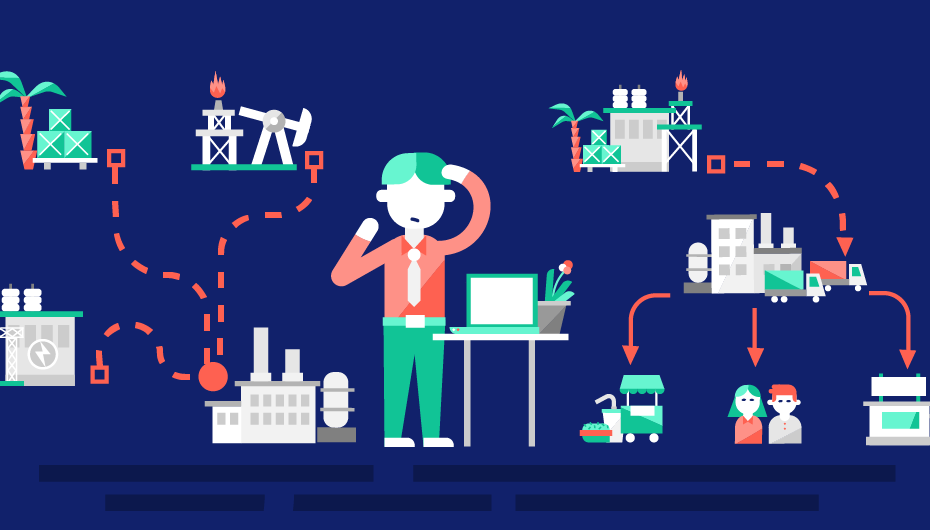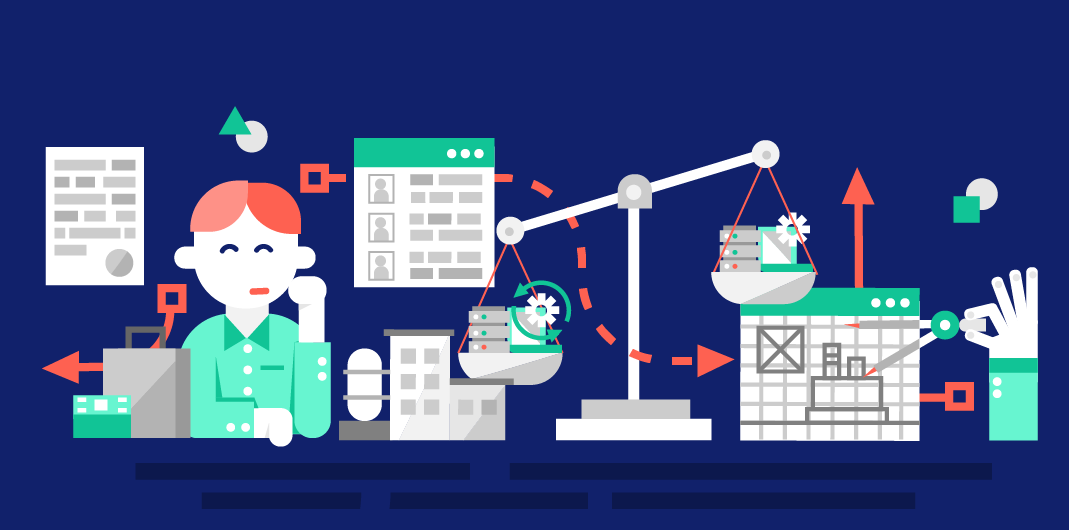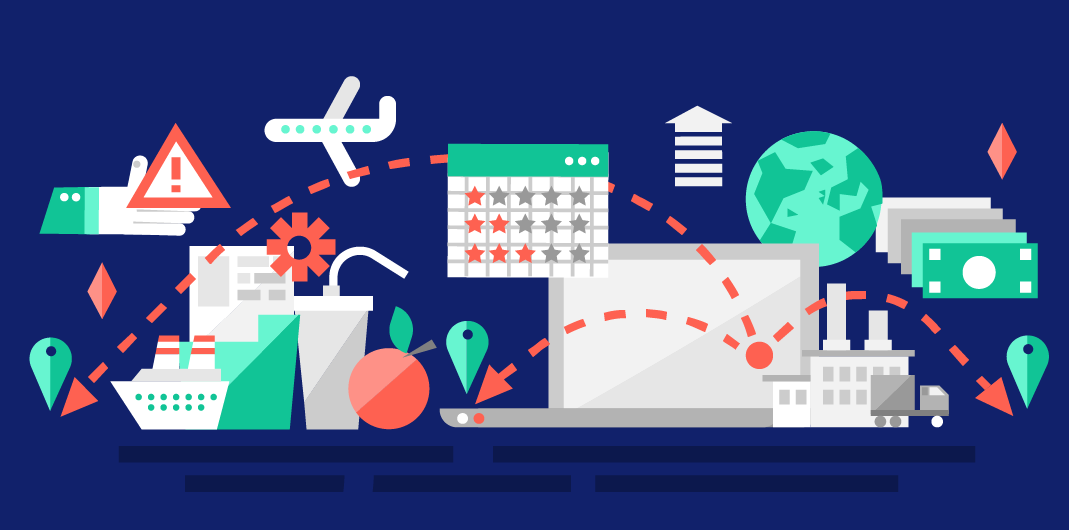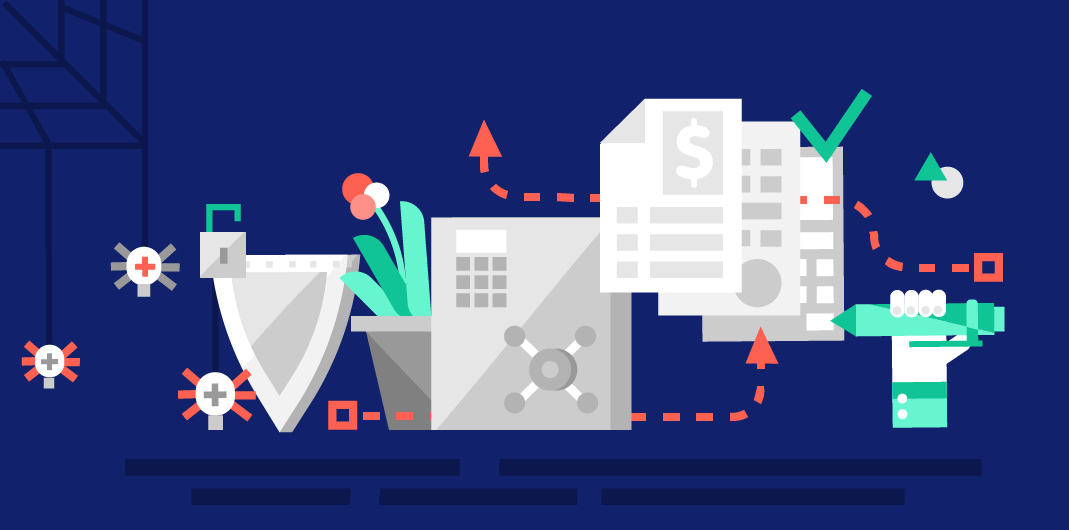Check out our detailed guide toward selecting an Enterprise Resource Planning (ERP) or Materials Resource Planning (MRP) system.
A Tale of Two Systems
If you’re a hardware entrepreneur whose startup is on the brink of scaling production, chances are that you’ve considered resource planning. Maybe you’ve even considered the two main types of systems out there that can help manage your production and business processes as you scale: Materials Requirements Planning (MRP) and Enterprise Resource Planning (ERP). Early-generation MRP and ERP systems had distinct differences from one another, but more modern MRP and ERP systems seem to have become increasingly similar. How do you know which one is best for your company?
In general, MRP systems are specialized for manufacturing and will be equipped with more robust production and shop floor control. The tradeoff is that they typically don’t support as many business processes as ERP (think: human resources, order entry, etc.). That means your company will have to invest in supplementary software solutions to support those other processes. On the other hand, ERP systems will support more overarching business processes, but it may not perform some specific functions as well as an MRP system. If you’re handling production or final assembly in-house, then you probably need solid MRP capabilities. This kind of system will help you better manage the shop floor, because improved oversight and control of the production process is a must. In short, the answer to the MRP vs. ERP question really depends on the specific needs of your particular business.
Timing Is Everything
You know that resource planning is a good thing, but what is the right time to actually invest in a system? While there is no firm answer dictating when you should purchase an ERP, there are a number of key considerations that will help steer you in the right direction. First, it’s best to wait to buy an ERP until you have a steady revenue stream – if you’re still dealing with unpredictable or sporadic sales, hold off on any big purchases. Consider the size and scope of your company. Typically, firms find that they need an ERP when they have more than 50 employees, track more than 200 stock keeping units (SKUs), sell more than 1,000 units per month, or ship products from multiple locations. All of these signs indicate that your company has enough scale to warrant a resource planning system.
However, keep in mind that the selection of ERP and MRP systems can be tough. The key is to clearly define what your business’ core needs are and choose the system that best meets those needs. For instance, let’s take the case of Fuze Energy Drinks. They sought a cost-effective solution to manage growing inventory, plan production and match supply to demand, and obtain financial information for efficient decision-making. They desired a web-hosted ERP, and ultimately selected Sage Accpac ERP to provide an adaptable enterprise resource planning solution for finance, CRM, and operations. The automation features of this system ensured timely controls on products going out of stock. All in all, the implementation was a success because the ERP selected addressed their core business needs.
Assessing Your ERP Readiness
Despite the many benefits, ERP selection and implementation involve a great deal of potential risk. In fact, a failed ERP implementation has the potential to fatally cripple your business. In some ways, buying an ERP system is like buying a car; it’s a very expensive purchase with many different factors and options to consider. You want to do your due diligence, shop around, compare prices, and see what best meets your needs. This is even more important because implementing an ERP system imposes top-down changes to all business processes, thereby affecting everyone in the organization. Below is a checklist of general functions and features that you should research and consider in an ERP system.
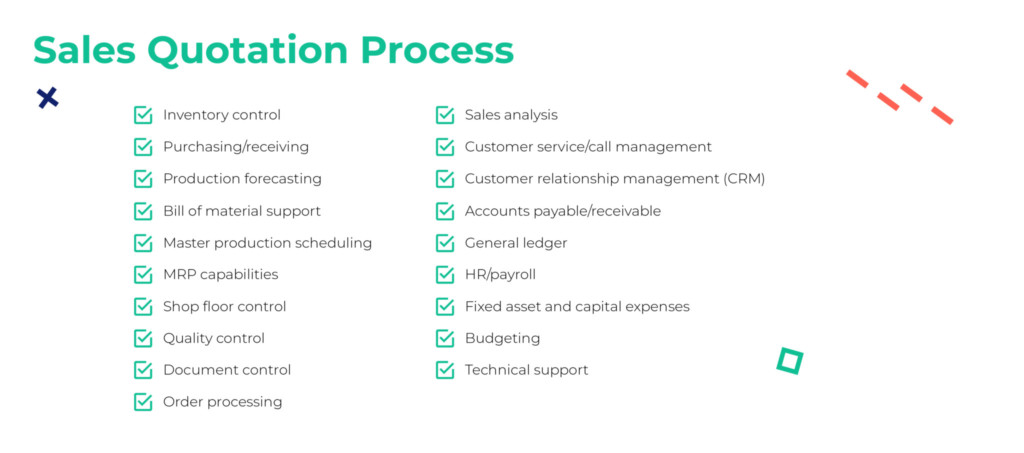
Before selecting an ERP system, identify and prioritize your business needs – then create a value stream map of the whole process. Your goal is to have the ERP system that you select meet your needs, as opposed to forcing your processes to meet the operating requirements of the system. Pro tip: beware of ERP salespeople that will overwhelm you with features and benefits. Take care that you’re not drawn to the bells and whistles before you identify and understand the 5% of the ERP system performance that will make up 95% of your usage. Make sure that you document all of your requirements before you purchase. Any requirement not discovered before purchase will inevitably become apparent with installation, and which point it may be too late. Process cards, like the example shown below, are a good way to holistically understand the specific needs of each business process so nothing gets overlooked in your assessment.

Managing Risk and Change
As mentioned, implementing an ERP system involves a great deal of risk for your business. Your job is to mitigate risk by being informed about the three primary factors that cause client disappointment with ERP implementations. First is deficiency in the requirements-gathering process due to client tendencies to under-report critical requirements. Second is the absence of, or deficiency in, change management disciplines before, during, and after the transition. Third, many companies underestimate the amount of ERP or MRP training required prior to or during system go-live. As such, make sure that you have laid out a clear plan for implementation with full management support!
A cornerstone of your implementation plan should revolve around change management. Since an ERP system impacts everyone, you must inform, educate, and train all impacted stakeholder groups so that they are bought-in to the implementation effort. As you do this, keep in mind the five core tenets of change management illustrated in the graphic below. Additionally, research best practices in change management and consider investing in an immersive course from the Association of Change Management Professionals (ACMP).
Selecting Your System
Choosing an ERP or MRP system requires a significant amount of time and resources. There are thousands of features and functions that must be evaluated against your company’s requirements. Still, you want to avoid cutting any corners during selection. It can be helpful to develop a process flow like the one displayed below to ensure that you are thorough and organized from end to end.

Even though it can be a lot of work, with the right ERP system your company can reap numerous benefits. An ERP helps you to increase customer satisfaction by decreasing customer response time and turn time, thus providing a more consistent customer experience. You can improve quality management by defining inspection plan criteria and closely monitoring results. By having the right amount of inventory, less wasteful overproduction, and lower defects, you can improve cost control. Your suppliers will be happier and more informed with seamless communication and global visibility of inventory status. And, you can better manage your risk with greater visibility for decision-making, explicit measures of strategic initiatives, and capabilities to identify weakness in the enterprise.
Right System, Right Time
In conclusion, ERP and MRP systems can add significant value to hardware-based businesses. As discussed, choosing the right time to acquire an ERP or MRP is as important as the system you end up selecting. Dedicate the time and effort required to understand the needs of your particular company so you can make the most informed decision and find the perfect fit.
Thinking about investing in an ERP or MRP system at your company? Sign up to receive advice and best practices on ERP selection and implementation sent straight to your inbox.
